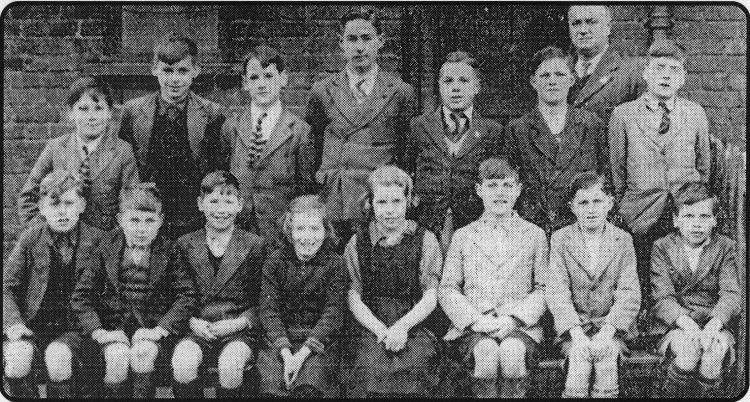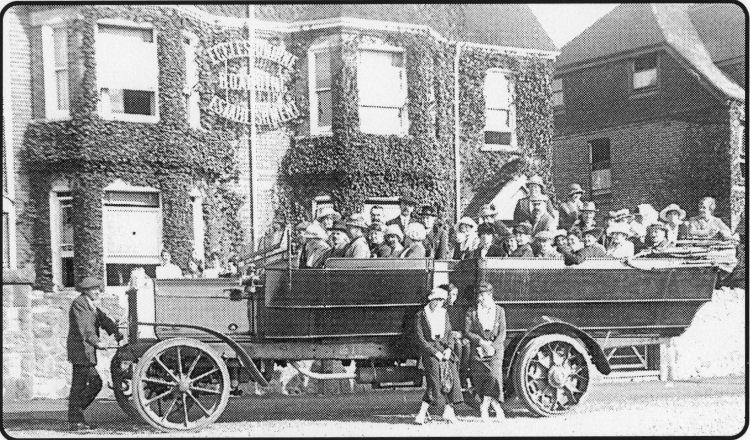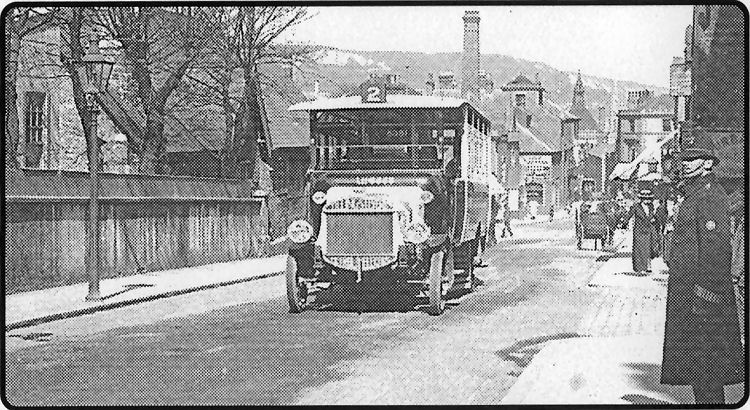
From the Folkestone Herald Published 4 May 2000
‘Holy grail’ bike.
I WAS chuffed to hear the Tom Arter historic collection of racing
motorcycles and spare parts helped create a new world record! A Brooks
auction sale at Stafford on April 16 netted £1.1 million, the highest ever
for a motorcycle sale. The star lot went for a record price too!
This star Item was the ex-Mike Duff 1954 AJS 497cc ‘Porcupine’ E95
machine, part of Tom Arter’s historic collection at Barham, which made
£157,700. It was the highest price ever for a British motorcycle. A spare
engine made £78,500 too, so it was including two vintage 1922 and 1925
machines, and 30 lots of spare parts etcetera cleared over £300,000.
The ‘Porcupine’ with twin cylinders tilted at 45 degrees in the frame to
ensure adequate air cooling, was described by the auctioneers as the “Holy
Grail” of the motorcycle racing world and the auction price proved It.
The engine was conceived with supercharging in mind but this was banned
at the end of 1946 and the design had to be revised.
Just as fast as the British racing Nortons and the Italian Glleras, only
four AJS E90 and four E95 ‘Porcupine’ models were built and were raced only
by the works team - except the Arter machine raced by a non-works rider,
Mike Duff.
Another Arter big seller was the ex-Frank Perris Matchless G45 racing
bike of 1955, which made £20,125, while a Matchless G50 built for John
Surtees but ridden by Peter Williams, sold for £19,550. George Beale also
bought over £50,000 worth of spares from the Arter Collection including
‘Porcupine’ gear cogs for £23,000.
The Arter sponsored and tuned ‘Porcupine’ appeared in classic events
throughout the 1980s.
Agents for AJS and Matchless Arter Brothers of Barham, acted as
development testers for the AMC factory, trying modifications and testing
new components In their race bikes which, If successful, were Incorporated
Into production models of such popular machines as the AJS 349cc 7R ‘Boy
Racer' of the late 1940s, 1950s and early 1960s.
A host of star riders were sponsored by Tom Arter through the years until
he effectively retired from the sport In 1980.
Brooks say the Arter collection was the finest they have ever handled.
And Interest in the sale was world-wide.
Another star lot was the Triumph Thunderbird motorcycle combination which
featured In the “Two Fat Ladies” TV cookery series. It too was sold at the
sale, to a private buyer, for £9,775 after some fierce bidding. The lot
included a host of memorabilia from the popular show.
A 1940s' photograph of Dover Road School evacuees featured in Memories on
February 24 and also on January 27, was of special interest to Mr Victor E.
Challls, now living in St Thomas Road, Newquay, Cornwall. The picture of
children evacuated to South Wales for safety in 1940, was first published in
The Story of a School - Dover Road, 1835-1958. This booklet was published In
1958 when children were settling in at a new school at Park Farm.

Victor writes: “I am one of the Challis boys in your photograph. Neither
of the two girls in the photo are my sister, but my brother Albert is in the
photo, second from the left in the front row. In the back row, left to
right, the first, I think, are the Wright brothers, from Canada, No. 3 ???;
No. 4 Cyril Bevan, then Billy Doyle, Kenneth Care, Mr C. Blunt and No. 8 Is
myself, Victor Challls.
“Front row, from left, No. 1 ???, No. 2 Albert Challls (still living In
Sandgate Rd, Folkestone), No.s 3 & 4 ???, No. 5 Iris Grummet, then Colin and
Jimmy Care, Toby Baker. Needless to say Mr Blunt was not my most favourite
person!” Mr Challls added.

PETER Hooper’s postcard picture of an early charabanc with heavy
artillery type wheels and solid tyres outside the Ecclesbourne boarding
house at 16 Wear Bay Road, near East Cliff. Behind the women posing in front
is the side entrance to the large coach which had a folding hood behind the
back seats. The Valentine series postcard probably dates from between the
wars and was one of many that would have been on display at F.W. Parrett's
Marine Studios and at 44 High Street.

A TILLING Stevens petrol/electric bus in Bouverle Road East, Folkestone
close to the junction with Alexandra Gardens, possibly in 1914. Behind the
bus is the old Gun Brewery with chimney and, left, behind the trees, Christ
Church School known to the children as the Gun School, after the brewery,
and Pelham House, a catering college.
 |
|
1900
Big welcome awaited the Boer War casualties.
OVER two columns of the Folkestone Express were devoted to
celebrations to mark the homecoming at Sandgate of some of the brave
soldiers who left town the previous November to fight In the Boer War,
men who "gambled dally with death” but returned home as Invalids -160 of
them, arriving in charabancs and a variety of other transports from
Sandgate railway station. Devons, Gordons, Rifles, Gloucesters,
Artillerymen Dragoons and Hussars arrived by hospital train from
Southampton to a warm welcome with much flag-waving from crowds along
the route to the Camp Hospital or Beach Rocks convalescent home.
Meantime 17 more East Kent Volunteers arrived in Hythe for training
before going out, in May, to join Capt Gosling's company fighting in
South Africa. They were expected to be led by Lieut Hubbard, of Margate,
their send-off to Include a party at the Volunteer Club in Tontine
Street given by Ueut Griffin. Latest casualty figures were given as 213
officers and 2,015 men kilted, plus 50 officers and 483 men died of
wounds. Other casualties brought numbers up to 842 officers and 13,982
men.
|
|
1925
Donkey races for women all part of the Easter fun.
Local lifesaving workers were appealing for funds for a motor
lifeboat at Folkestone stressing the need due to the cross-Channel
traffic to and from Folkestone. Jubilation was in the air at Hythe where
the Town Council managed to keep the rates down to same level as the
previous year. Felix who wrote a weekly column for the Herald in a
light-hearted vein, described how the local people had celebrated the
Easter holiday 50 years before. Half the population headed for the hills
and, in particular, the great meadow behind Caesar's Camp. Here there
was a grand picnic, each group taking their own ‘rations.’ There was
dancing to music by a six-piece band and great fun was provided by
gallops and races on Father Sparke’s donkeys with lady jockeys. There
was no football then, but a sport known as goal running and rounders.
The return trek was via the then village of Foord. A Bayle Garage
advertisement In the Herald in April 1925 offered the “Aquaplane"
described as a collapsible, unsinkable ‘craft’ with 16sq ft of sail and
weighing about 20lbs which “can be used by the swimmer or non-swimmer."
The cost, of just under £6, included a sun canopy, tripod mast, pump and
canvas carry case.
|
|
1950
Earl Radnor fighting for Victoria Pier war cash.
THE Earl of Radnor took action against the British Transport
Commission and the moribund Folkestone Pier & Lift Company for
compensation In respect of the Victoria Pier which was gutted by fire in
May 1945. The action was to determine who should receive compensation
payable by the Crown. The pier company had mortgaged It to the South
Eastern Railway Co in 1894. In September 1940 It was requisitioned by
the War Office which was In possession when it was destroyed. The
estimated cost of rebuilding the pier was £45,000. The wreckage was
unlit and a hazard to shipping. If successful in his action Lord Radnor
proposed to demolish the pier, as compensation was unlikely to total
more than £10,000. Disposal of the carcase of a 15ft dolphin washed up
on the beach at Littlestone was causing concern for councillors of New
Romney Town Council because the KCC considered to be a fish! But a
dolphin - It weighed about 15 cwt - is a sea animal. The cost of labour
to dispose of it was only £3 but councillors wanted to know who would
pay, To perpetuate the memory and long association with Hythe of the
late Lord Wakefield, a generous benefactor of the town, a pathway at the
recreation ground was named Wakefield Walk and a suitable plaque
unveiled.
|
|
1975
Earl Radnor s vital role in town’s development.
The Herald published a profile of the eighth Earl of Radnor,
Jacob Pleydell Bouverie, written by Drew Smith. The Earl, descended from
a Huguenot family, owned a great deal of local property and farmed in
Wiltshire. Hit by polio as a child, which left him with a limp, he had
six children. He told the Herald how his Huguenot ancestor came to the
town In 1697 to invest money In land made in trading with Turkey. At the
time Folkestone was a fishing port of under 5,000 people. The family
estate ranged as far as Hawkinge to the north, the Warren In the east
and Sandgate to the west. By the mid-1800s the Pleydell Bouverles were
virtually running the town as if they were a modern-day council and in
1901 the fifth Earl was elected mayor. He stressed his great concern for
Folkestone and its future, saying he felt a great deal of responsibility
for the town, the charm of which he hoped to preserve. In his role
helping to control development, he said, he tried to strike a balance
between tourism, light industry and housing. By 1975 the Radnor estate,
after disposing of some of its land, had been concentrated in an area
from the Bayle to the railway line and in the west to Sandgate. Plans
for 30 council homes on the former School of Infantry site at Hythe were
described as “ugly, depressing and appalling” a Shepway council
committee which rejected them.
|
|




